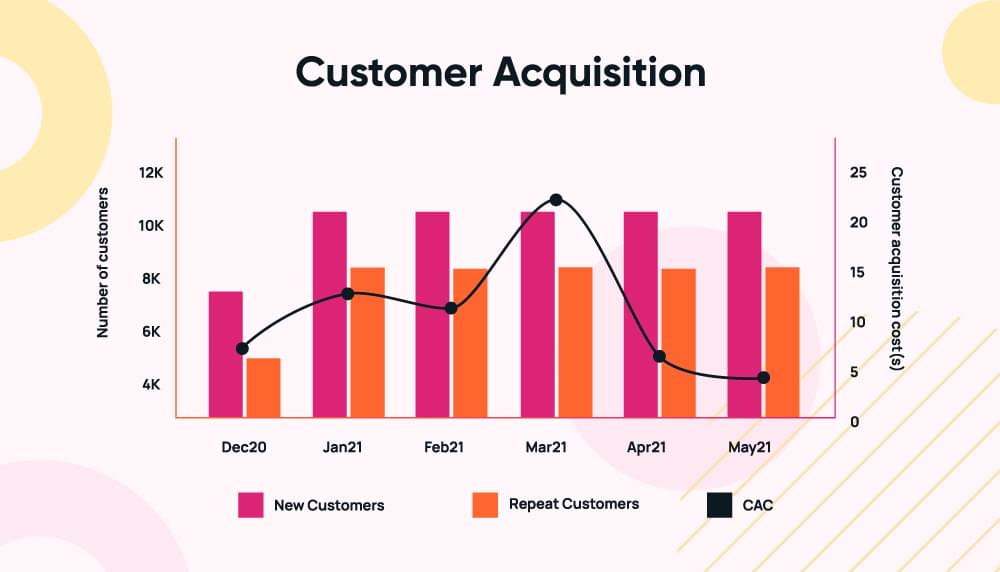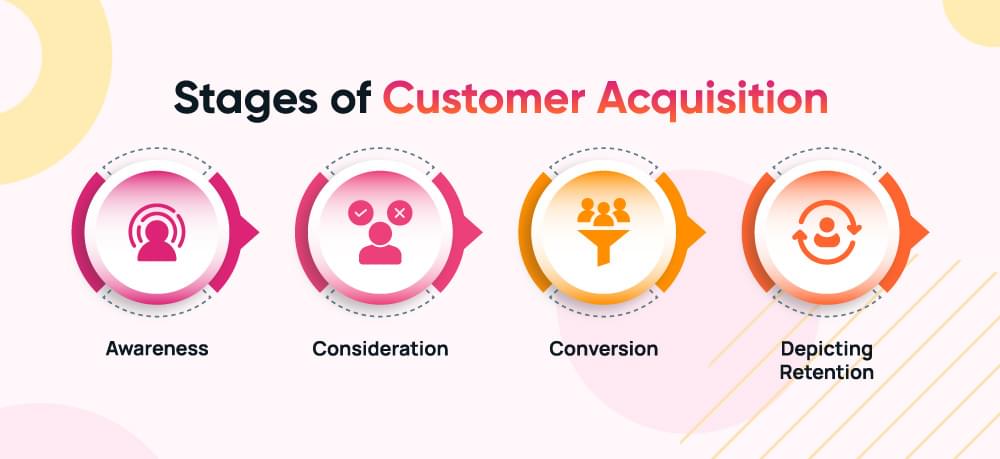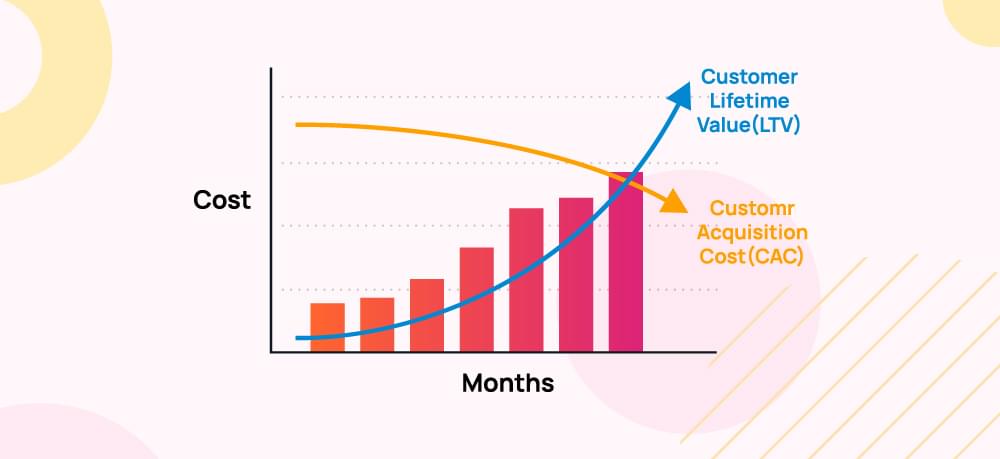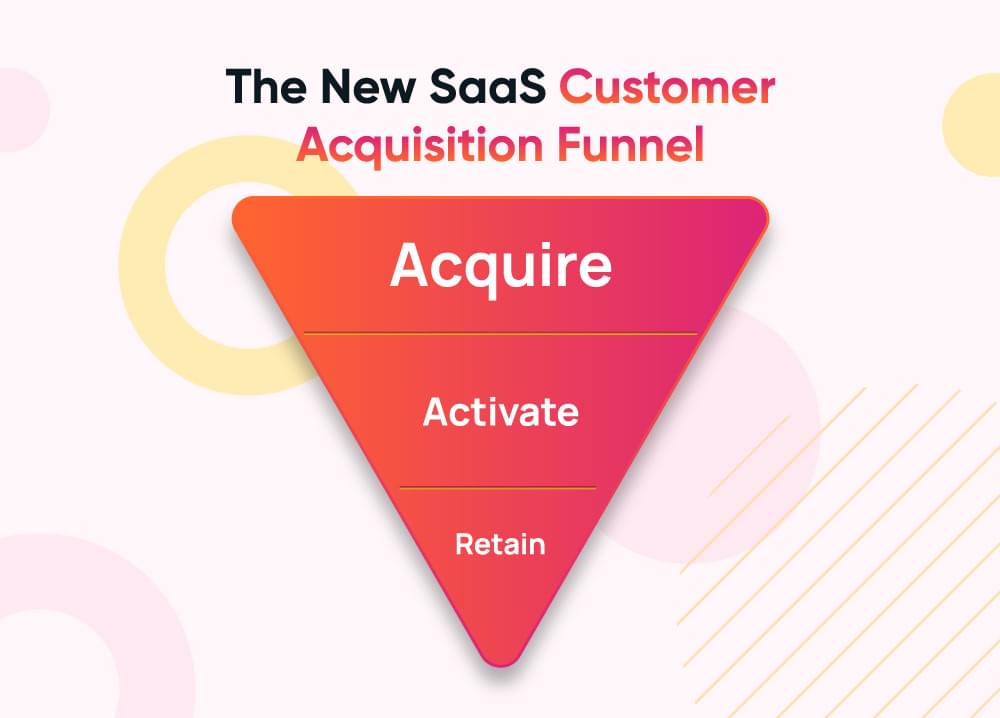
What is Customer Acquisition

What if you toss a party at your place? You’ve got everything set. But no one’s there yet. What if this party is your business and you don’t have enough customers? You can’t have a party without guests, and you can’t have a business without customers.
In business, your customers are like your party guests.
If you are a growing company, it is no secret that acquiring new customers is the life of your company. But let me tell you, acquiring new customers ain’t easy. There’s a whole lot of effort on strategy making, trial-and-error, and (let’s be honest) pure hustle that goes into housing up that customer base.
In this blog post, we’re going to understand customer acquisition in detail. We’ll learn actionable tips on how to start winning over new customers like a pro to earn customer loyalty. Here are the inks to learn more about Customer Acquisition Cost (CAC) and importance of CAC in SaaS industry.
Related Read: What is Customer Acquisition Cost
What is Customer Acquisition
Customer acquisition is the process of bringing new customers into your business.
This includes the process of attracting and engaging the prospects into paying clients.
Customer acquisition involves marketing and sales strategies.
It is highly dependent on your understanding of the customer base and its cohorts.
Customer acquisition cost (CAC) is the metric to measure the effectiveness of your acquisition efforts.

Why exercise Customer Acquisition in business
At its heart, customer acquisition is about growth. No business can survive without customers, and as businesses evolve, they need to ensure a pipeline of new customers to compensate for churn or to enter new markets. This process keeps your revenue flowing and helps create a sustainable business model.
For startups, customer acquisition is critical because early-stage growth is often tied directly to how quickly and effectively they can attract customers. For established businesses, acquiring new customers is essential to expand market share and introduce new products.
When revenue growth strategies like digital marketing, lead generation, conversion rate optimization, etc are successful, you are more likely to acquire customers with better lifetime value – customers with high engagement potential, long-term loyal and repeat purchasers.
Customer acquisition brings growth and expansion to your business. A well-planned acquisition strategy allows it to grow quickly and touch new markets.
Provides you with a strong standing against competitors in the market
Attracts potential investors.
Helps you create brand identity and increase awareness among the target audience.
Above all, it provides stability to your business revenue as it brings healthy cash flow.
Stages of Customer Acquisition Management
With all the recent attention dedicated by business professionals to customer retention, customer acquisition has become a secondary concern; however, customer acquisition is still the first stage of the customer life cycle.
Whether you’re a scrappy startup or an established brand, the challenge is the same – how do you cut through the noise and get people to choose your product or service over all the other options out there?
Here are the stages of acquisition to follow:

Brand Awareness
It is the stage where you introduce your product to the target customers – customer journey starts from brand awareness. You can introduce your brand by using techniques like:
Marketing and advertising
Digital advertising
Social media outreach
SEO
Content marketing
Customer Engagement
Once potential customers are aware of presence of your product, interested customers will start to interact with your business. This stage requires effective communication. Customer Acquisition Specialists use the below-mentioned techniques to help customers choose your product.
Providing relevant content
Email campaigns
Offering incentives
Discounts and free trials
Customer Conversion
Once a customer is engaged, the next step is to convert them into paying customers. At this stage, you will have to convince the customer how your product is the best fit for their needs and why they should use it. You can do so by:
A well-designed sales funnel
Personalized messaging
Paying personal visits
Emails
Clear Call to action (CTA)s
Customer Retention
Customer retention is not strictly a part of customer acquisition; however, retaining existing customers and managing customer retention is crucial for the long-term profitability of your business. Acquiring new customers can be expensive but collective efforts to maximize Lifetime value (LTV) can result in repeat business – high revenue and growth.
How Does Customer Acquisition Work
Customer acquisition is a balance of understanding your target market then crafting the perfect pitch, and finding new approaches to reach your target customers – it cannot be a one-man show.
Since it includes many teams, customer acquisition is costly as compared to customer retention. Therefore, not many companies have an established process of customer acquisition across the board – marketing and sales teams are the ones bearing the pressure mostly.
Here’s how your teams can help make your voice heard by the customers.
Customer Insight teams: these teams are the ones who work to understand target customers, market segmentation, and brand campaigns for your business. They run ads and digital campaigns. The collective efforts of customer insight teams create interest in the target audience – the first step toward lead generation.
Marketing and Sales teams: we are well aware of their vision. The marketing team reaches out to potential customers via emails, in-person visits, phone calls, newsletters, etc. – they generate the lead.
Once a lead is acquired, the sales team houses in the customer by influencing the prospect with the worth of your product and why they should buy it – the sales team closes the lead.
Customer Support and Retention teams: once a customer becomes a paying customer, your customer support team receives the task of helping the customer achieve what they paid for. They can do it by providing an excellent support experience – creating customer loyalty, reducing churn and, successful customer retention.
The collective work of these teams creates the stages through which a prospect becomes a paying customer. We discuss the stages and strategies in detail next in the blog.
What brings Customer Acquisition Excellence
The answer to this question isn’t pretty. Studies have shown that there’s only one business variable which distinguishes companies that excel at customer acquisition - these companies have a budget dedicated to customer acquisition activities.
Other factors might include the presence of an executive responsible for customer acquisition and in-place effective customer retention strategies.
Customer Acquisition vs. Lead Generation
Descriptively speaking, customer acquisition and lead generation are different tasks though they lead to a similar destination – new customers.
Lead Generation is a part of the customer acquisition process. It focuses on identifying and attracting new customers. Lead generation is typically followed by Lead Acquisition when a customer is with your marketing and sales team. Next comes Lead Conversion where the prospect becomes your customer.
Simply put, lead generation takes place at the top of the customer acquisition funnel, then lead acquisition is considered in the middle, and lead conversion occurs at the bottom.
Customer acquisition on the other hand is a broader process of converting leads into customers including identifying and attracting potential customers to marketing your product to converting them into paying customers.
The Role of Customer Acquisition Cost (CAC)
While this blog focuses solely on understanding customer acquisition, it’s important to briefly touch on the Customer Acquisition Cost - a key metric that measures the cost of acquiring each new customer. It’s calculated by dividing your total marketing and sales expenses by the number of new customers acquired over a specific period.
For SaaS businesses, the CAC helps measure profitability, and balancing it with Customer Lifetime Value (CLV) is your path to sustainable business growth. We’ll explore this in more detail in future blogs focused on customer acquisition cost for SaaS.
Components of Customer Acquisition Process
Below are the factors of the customer acquisition process that have a direct impact on acquisition success or failure. If the outcomes of these components are positive – you are doing well.
Acquisition Methods
You can choose from Customer acquisition methods, such as traditional marketing and advertising, digital and online channels like search engine optimization (SEO), social media, and email marketing. The effectiveness of these methods can vary depending on the industry and your target audience. So, you need to carefully select which combination of the above-mentioned strategies works best for your business; otherwise, it can be a total waste of money, time, and effort.
Acquisition Cost
Let’s not forget the financial side of things. Customer acquisition costs can add up quickly, so you’ve gotta be smart about where you’re investing your marketing dollars. If not controlled and planned, acquisition costs can reduce your business’s profitability. Expenses like sales, commissions, marketing expenses, customer onboarding, conversion rate optimization, etc. contribute to the overall customer acquisition cost (CAC).
Do you go to the digital route with targeted ads and SEO? Or is it old-school direct mail and networking more your style? The options are endless, and the stakes are high.
Acquisition and Brand Equity
The strength of your brand’s equity can influence customer acquisition, retention, and profitability either way. A strong brand can help your business attract and retain customers more effectively, leading to better financial performance or vice versa.
Acquisition and Retention
Customer acquisition and customer retention are closely tied together. When the customer acquisition process houses new customers for your business, customer retention strategies retain them and bring in customer loyalty by reducing the churn rate. So learn to strike a balance between both strategies to maximize customer lifetime value (CTV).
How to Measure the Effectiveness of Customer Acquisition
The effectiveness of your acquisition efforts is measured through Customer Acquisition Cost (CAC). CAC is the cost you bear to acquire a new customer. CAC includes marketing and sales expenses.
The lower your CAC, the more efficiently you’re acquiring customers, but it’s necessary to balance it with Customer Lifetime Value (CLV) for long-term business profitability.

Though this blog focuses solely on what customer acquisition is, you might also consider the costs involved and how businesses—especially SaaS companies—evaluate metrics like average CAC. These topics, including how to calculate CAC and reduce it, will be covered separately.
Which Channels to Use for Customer Acquisition
There are different channels you can leverage for your customer acquisition efforts. These channels connect to your customers. Choose the channel depending on your target audience, industry, and budget. Some of the most common channels include:
Search Engine Optimization (SEO)
We know that the SEO process is used to optimize our online platforms to improve rankings on search engines like Google, Yahoo etc.
The goal is to increase organic traffic to your platform, which can lead to organic sales. Below-mentioned are the online channels that can be used for customer acquisition.
Company Website:
Blogs and content writing
Video marketing
Social Media Marketing
Referral Programs
All of these platforms can become your powerful customer acquisition channels when optimized well using SEO tools and techniques. So invest in top SEO tools to help you optimize whichever channel(s) you choose to bring organic sales.
SEO optimization improves the conversion rate of your platforms. There are multiple SEO techniques, but they all depend upon KEYWORDS. You can use paid services, but there are free services like Ahrefs, SEMRush and Open Site Explorer that provide free services to find the best keywords.
Your online presence is also your eyes and ears – customer feedback. Invest in services like Churnfree to effectively collect and manage your feedback and churn surveys for product development and customer satisfaction.
Paid Advertising:
You can use paid advertising, such as Google Ads and social media ads to increase business visibility and attract qualified leads. These ads are designed to only target the potential customers. This approach not only improves brand awareness but also brings organic customers.
Collaboration with Influencers:
You can partner with influencers for customer acquisition. By collaborating with relevant influencers, the conversion rate of your online channels can increase as their followers are more likely to act based on their endorsement.
Sales Calls:
Sales calls – an old school marketing technique that remains an effective direct customer acquisition method to this date. Direct personalized calls to prospects provide a higher rate of conversion – but some people find these calls annoying.
Email Marketing:
Email marketing continues to be one of the highest-ROI acquisition methods. Segmenting your email list and delivering personalized, relevant content helps nurture leads and keeps your business top-of-mind. Including clear CTAs in emails encourages recipients to take action, whether it’s downloading content or making a purchase, improving conversion rates as the relationship with the customer strengthens.
Events and Exhibits:
Hosting or attending events and exhibits provide interaction and product demo opportunities. With targeted customers visiting, you can turn face-to-face interactions into high-quality conversions.
Webinars:
If your product or service can be benefited by this channel, then webinars can lead to higher conversion rates when paired with follow-up strategies like personalized offers and targeted content related to the webinar topic.
Whichever channel of customer acquisition you choose, choose it wisely because if not done right you can end up wasting a lot of money.
Customer Acquisition Funnel
A funnel for a customer is the visual representation of his journey from being a nobody to your business to your business customer.
Customer acquisition funnel shows the stages of customer acquisition management through which a prospect becomes your customer. As we have discussed the stages of customer acquisition in detail, here is a visual representation for better understanding.

Related Read: B2B customer journey
Conclusion
Customer acquisition is the stuff that keeps business owners up at night, wondering how to reel in those new customers. As new customers are acquired, the revenue of your business increases and so does the presence of your business in the market. This proves that you have outperformed the competitors and your strategies to attract new customers are booming. However, your main focus could be balancing customer acquisition and retention efforts in the long run.


